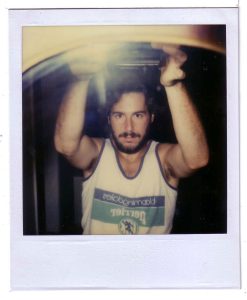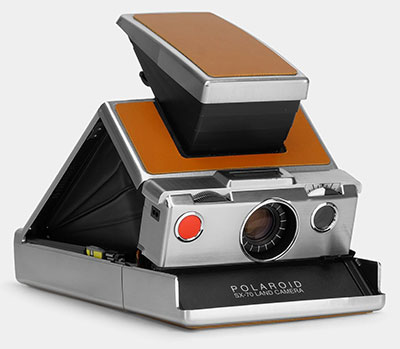
Marc Silverman’s journey with the Polaroid SX-70 began in 1974 when he purchased his first camera as a student at the Philadelphia College of Art. A friend of his recently recalled that he “never remembered seeing [him] anywhere without that camera,” a testament to his early and enduring passion for the device. Silverman’s initial purchase was a “Special Edition” camera, which, despite costing 25% more, came with an incredible offer from Polaroid: mail in 10 unwanted photos and receive a coupon for a free replacement roll of SX-70 film.
This offer, which seemed too good to be true, was a reality for many years. Silverman would regularly mail boxes of 20, 40, or even more SX-70 photos to Polaroid’s headquarters in Cambridge, Massachusetts, and in return, he would receive coupons for free film. His engagement with the Polaroid SX-70 continues to this day, a testament to its lasting appeal.
His story is intertwined with the larger history of Polaroid film’s revival. When Polaroid announced it would cease production of instant film in February 2008, three individuals—Florian Kaps, André Bosman, and Marwan Saba—founded The Impossible Project. In June 2008, Kaps and Bosman met at the Polaroid factory’s closing event and committed to creating a company to produce materials for Polaroid cameras. That October, Impossible purchased Polaroid’s remaining production machinery for $3.1 million and leased a portion of the former Polaroid plant in Enschede, Netherlands. Using this equipment and facility, they developed new instant film products for existing Polaroid cameras, beginning mass production and sales in 2010.

The Polaroid SX-70 is a folding single lens reflex Land Camera which was produced by the Polaroid Corporation from 1972 to 1981. The SX-70 helped popularize instant photography.
Pictures from the SX-70 ejected automatically and developed quickly (fully within 10 minutes) without chemical residue. Polaroid founder Edwin H. Land announced the SX-70 at a company annual meeting in April 1972. On stage, he took out a folded SX-70 from his suit coat pocket and, in just ten seconds, produced five photographs, both actions impossible with previous Land Cameras. The company first sold the SX-70 in Miami, Florida in late 1972, and began selling it nationally in fall 1973. Although the high cost of $180 for the camera and $6.90 for each film pack of ten pictures ($1,353 and $52 respectively when adjusted for inflation) limited demand, Polaroid sold 700,000 by mid-1974. In 1973–74, the Skylab 3 and 4 astronauts used an SX-70 to photograph a video display screen to be able to compare the Sun’s features from one orbit to the next.
There were a variety of models, beginning in 1972 with the original SX-70, though all shared the same basic design. The first model had a plain focusing screen (the user was expected to be able to see and discern whether an image was in focus or not) because Dr. Land wanted to encourage photographers to think they were looking at the subject, rather than through a viewfinder. When many users complained that focusing was difficult, especially in dim light, a split-image rangefinder prism was added. This feature is standard on all later manual-focus models.
